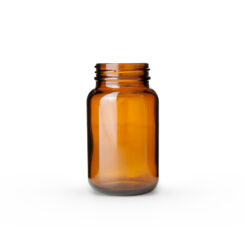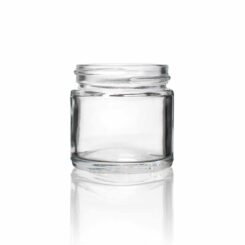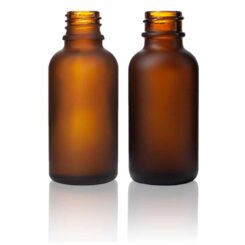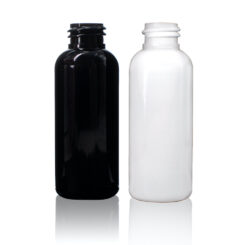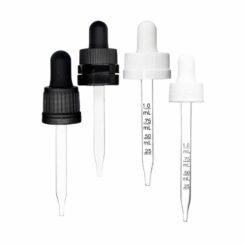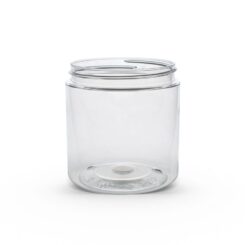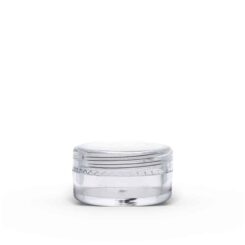Why You Should Use BPA-Free Packaging vs. BPA Plastic Packaging
BPA used to be a staple ingredient of almost every plastic substance you could think of, from baby bottles to plastic to-go containers. That’s because prior to 2010, the FDA considered BPA to be a safe substance. Further research, however, highlighted some of the risks of BPA plastic packaging.
Now, BPA-free plastics dominate the marketplace. But what makes BPA-free packaging better?
In this guide, we’ll explore the differences between BPA packaging vs BPA free packaging and why you should always opt for BPA-free. The health of your customers could depend on it.
What is BPA?
BPA, also called bisphenol-A, was first introduced in 1891. BPA was particularly effective at strengthening polycarbonate plastics, making it a popular additive to most plastic products.
You could find BPA in a variety of products, such as:
- Canned foods, as epoxy resin lining to prevent rusting
- Feminine hygiene products and other toiletries
- Eyeglass lenses
- Thermal receipts
- Baby bottles
- Plastic to-go containers
And much more…
However, in 2008, the potential health risks of BPA began to make headlines, leading to a market push for BPA-free products.
Why Was BPA So Popular?
BPA is a popular additive because of its effectiveness in strengthening polycarbonate plastics. It also makes for effective epoxy resins.
Both polycarbonate plastics and epoxy resin are widely used substances due to their advanced versatility and effectiveness.
Polycarbonate plastic, for example, is shatter-resistant, extremely clear, and very lightweight. It’s also heat-resistant and electrically resistant. For this reason, you’ll often find BPA in both industrial and residential settings.
Epoxy resins, on the other hand, are uniquely tough and incredibly adhesive. Most commonly, epoxy resin is a coating material found in a variety of industries such as:
- Wind energy
- Electronics
- Paints and coatings
- Marine
- Aerospace
However, there are more and more BPA alternatives hitting the market each day. In fact, certain industries are no longer allowed to include BPA in the manufacture of their products.
The 2012 BPA Ban
In 2012, the FDA banned the use of BPA in the manufacture of bottles and sippy cups aimed at babies and toddlers. This is because BPA exposure is generally more harmful to these demographics.
However, the FDA did conclude that most current levels of BPA are not high enough to drastically impact human health. Most consumers, however, still prefer to have BPA-free products, as it gives them ease of mind.
What Are the Health Risks of BPA?
The main concern with BPA was an estrogen-like substance that leaked from BPA plastics. The most common issues resulting from this substance are breast cancer and reproductive problems, particularly in women.
Some of these reproductive issues include:
- Miscarriage
- Infertility in men and women
- Early puberty in young girls
- Premature delivery of babies
- Abnormal genital development in infants
BPA may also be responsible for non-reproductive issues such as:
- High blood pressure
- Heart disease
- Changes in mood or behavior
- Issues in the prostate
- Poor or abnormal brain development
- Polycystic Ovary Syndrome (PCOS)
- Asthma
- Increased production of liver enzymes
- Liver dysfunction
- Type 2 Diabetes
- Obesity
- Abnormal or disrupted thyroid function
Unfortunately, so many products feature BPA in their manufacturing that it is virtually impossible to live a 100% BPA-free lifestyle. Still, limiting your interactions with the substance can help you avoid some of these complications.
What is BPA Free?
Going “BPA-free” means attempting to eliminate BPA from your lifestyle. Bisphenol S (BPS) is a close cousin to BPA. Often, BPA-free products instead feature BPS.
Scientists don’t know too much about BPS except that it is just as effective at hardening plastic as BPA. Some believe it may be just as harmful as BPA. However, it is best to do your own research on individual products before buying them to ensure the claim is appropriate.
Some manufacturers may also use other chemical alternatives to BPA in an effort to go BPA-free in an effort to protect public health. These alternatives are also generally safer than BPS. Examples of alternatives include:
- Vinyl
- Polyester resin
- Acrylic
- Modified polyester
Be careful when shopping for BPA-free products. Some may still contain higher amounts of BPA, which can be harmful. You should perform thorough research on every product you purchase.
Unfortunately, there are trace amounts of BPA in dust, water, and air. The environmental exposure could contaminate otherwise BPA-free products. Certain trace amounts are acceptable, granted the amounts are under a certain threshold.
How to Go BPA-Free
One of the easiest ways to go BPA-free is to go plastic-free. For example, using glass packaging instead of plastic packaging can be a great way to reduce your exposure to BPA.
Wood is another good option for avoiding BPA. However, wood may still feature epoxy resin coatings, so it is best to do more research into these products. In addition, wood is not an ideal resource for more moisture-rich products, like certain cosmetics.
You can also find a wide variety of BPA-free plastics. These are becoming more widely available and, thus, easier to find.
Identifying BPA Plastics
Sometimes, you may not realize plastic contains BPA. Look for containers labeled with a 3, 7, or “PC.” These labels are a good sign that the item contains BPA.
You can usually find these number labels on the bottom of the plastic packaging. They are usually inside or near the recycling symbol, which is an arrowed triangle.
Not all 3 or 7 plastic packaging contains BPA. However, unless it features a “BPA-free” label, there’s a good chance it features BPA.
Plastics labeled with a 1, 2, 4, 5, or 6 are likely BPA-free. This is true even if they do not contain a “BPA-free” label. This is because they are made from traditionally BPA-free plastics, such as vinyl or polyester.
Plastic 3: Vinyl and Polychloride Vinyl (V/PCV)
PCV, or polychloride vinyl, is a type of thermoplastic. This means it is capable of withstanding extreme temperatures and harsh impacts.
As temperatures change, PCV’s physical properties will also change. This makes PCV a popular choice for many applications, especially in regard to food storage and safety equipment.
BPA is often used in the manufacture of PCV because of its efficacy in hardening plastics. You’ll often find Plastic 3 in applications such as:
- Chemical and household cleaner containers
- Lotions and shampoo containers
- Food containers, especially for oils, marinades, and hot sauce
Plastic 7: Other (PC)
Type 7 plastic is considered bioplastic. This is because it is made from a combination of plastics such as:
- Acrylic
- Polycarbonate
- Nylon
- Polylactic acid
- And more…
Since BPA is a key ingredient of Polycarbonate (PC) plastic, it is often found in type 7 plastics.
However, it is possible for polycarbonate plastic to be made without BPA. In this case, the plastic product will be clearly labeled as “BPA-free.” This label is usually found on the bottom of the bottle, next to the recycling number.
Any plastic you use, even plastic droppers, is best kept BPA-free.
Other BPA-Free Tips
Avoiding exposure to heat can help prevent BPA from leaking into your food, cosmetics, or other substances. Never microwave plastic containers, for example.
When shopping for or selling cosmetics, try using glass jars instead of plastic ones. This will virtually eliminate the risk of BPA exposure. As many beauty products are primarily used by women, this is a particularly important sector to limit BPA exposure.
You should also look for BPA-free labels when shopping for things such as toys, interior decorations, and paints. Ask or research the manufacturer if you are unsure about the product’s contents.
When shopping for toys, wooden toys or stuffed toys can make great alternatives. Just make sure they don’t contain plastic additives.
Advantages of Offering BPA Free Packaging For Your Business
Many people would prefer to avoid BPA. This is especially true for women and parents, as BPA often affects women and babies the most.
If your business is selling cosmetics or foods, it is especially important to offer BPA-free options. Your body may absorb BPA topically, or when ingested, so you’ll want to keep these products free of the harmful substance.
Being able to market your product as BPA-free can help you attract new customers and retain the ones you already have. Additionally, it may protect you from liability should complications from BPA arise after using your product.
BPA-Free Offerings Attract Customers
Now that you better understand BPA and the push for BPA-free packaging, you can see why it’s a good idea to offer this option to your clients. Most people want to limit their exposure to BPA as much as possible.
If you’re in the market for plastic bottles, shop our collection. Our high-quality packaging is BPA-free and perfect for every commercial application imaginable.

